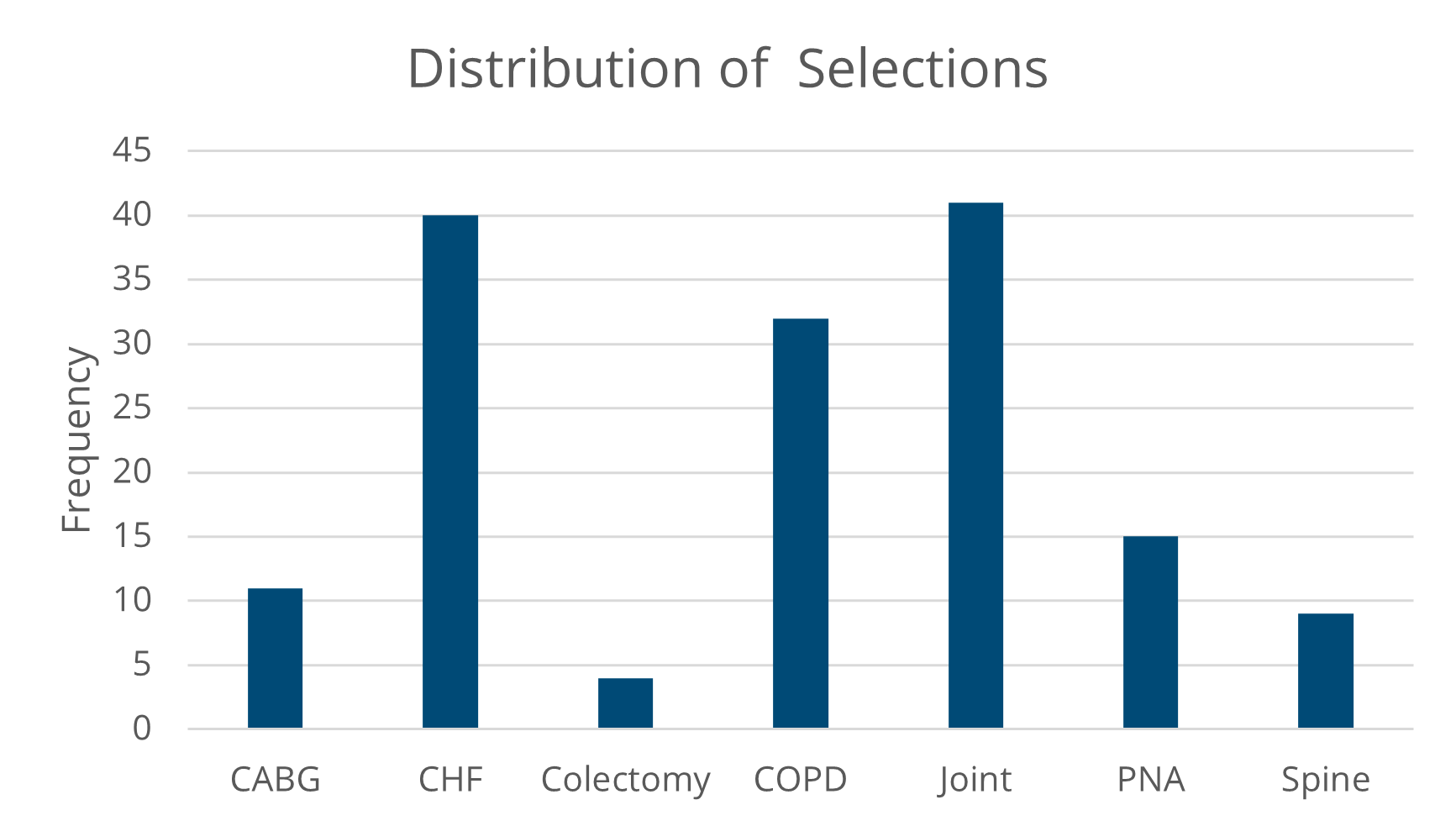The MVC Coordinating Center recently distributed condition selection reports for Program Years 2022 and 2023 of the MVC Component of the Blue Cross Blue Shield of Michigan (BCBSM) Pay-for-Performance (P4P) Program. The reports were provided in conjunction with details pertaining to the condition selection process, as well as changes to the scoring methodology, cohort assignments, and bonus points available. More details about those changes was published in a previous MVC Coordinating Center blog.
Eligible members were tasked with reviewing these reports and returning their condition selection form at the end of August. Each participating hospital selected two of the seven available conditions for PY22 and PY23: spine surgery, joint replacement, chronic obstructive pulmonary disease (COPD), coronary artery bypass grafting (CABG), congestive heart failure (CHF), colectomy (non-cancer), and pneumonia. The condition that was selected by the most participants was joint replacement with 41 hospitals selecting it, followed closely by CHF with 40 selections. COPD was selected by 32 hospitals. See Figure 1 for a depiction of the total selections for each condition.
Figure 1.

Although the two conditions selected most frequently were consistent across a variety of hospitals, the overall selections varied somewhat from region to region and by hospital size or type. For instance, hospitals with fewer than 100 beds were much more likely to select pneumonia as one of their two conditions than peers with more than 100 hospital beds (see Figure 2).
Figure 2.

Conversely, larger hospitals that perform more complex procedures made up the totality of selections for spinal surgery, colectomy, and CABG. Still, joint replacement and CHF were the most commonly selected conditions among all hospital sizes.
Similarly, CHF and joint replacement were popular among all hospitals regardless of location type, such as urban or rural (see Figure 3), or location within the state (see Figure 4), with the exception of Region 4 hospitals selecting COPD more frequently than joint replacement.
Figure 3.

Figure 4.

With the majority of hospitals focusing on both joint replacement and CHF, the MVC Coordinating Center hopes that continued participation at the joint and CHF workgroups will result in meaningful collaboration among members. MVC will also continue to offer events for virtual networking with facilities and physician organizations (POs) within a member’s geographic region (see Figure 5). These regional networking events provide additional opportunities to connect and share knowledge with peers who may share your hospital’s priorities. For instance, the next Coffee, Chat, and Collaborate virtual networking event takes place among hospitals and POs in Region 1 on Monday, September 13, at noon. Members from Region 1 interested in attending can register here.
Figure 5.

P4P cohorts were reassigned for PY22 and PY23. These changes were also detailed in the new technical document, and the new cohort assignments were published on the MVC website. The cohorts were not intended to group hospitals that are exactly alike; rather, they created a reasonably comparable grouping from which MVC can complete statistical analyses.
This program began in 2018, when BCBSM allocated 10% of its P4P program to an episode of care spending metric based on MVC data. This metric measures hospital performance using price-standardized, risk-adjusted 30-day episode payments for BCBSM Preferred Provider Organization (PPO), Medicare Fee-for-Service (FFS), BCBSM Medicare Advantage, Blue Care Network (BCN) Health Maintenance Organization (HMO), and BCN Medicare Advantage.
If you would like to receive notices about the MVC workgroups or have questions about any aspect of the MVC Component of the BCBSM P4P Program, please contact the MVC Coordinating Center at michiganvaluecollaborative@gmail.com.